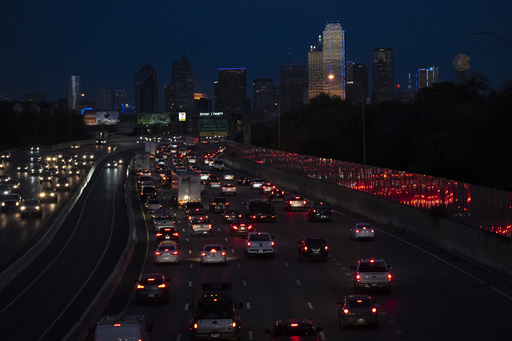Everything is bigger in Texas, including the number of residents of diverse racial and ethnic backgrounds who joined the state’s population last year.
The Lone Star State led all others in new Hispanic, Asian and Black residents in 2023. Among U.S. metro areas, Houston added the most Hispanic residents, and Dallas the most Asian and Black residents, according to population estimates released by the U.S. Census Bureau on Thursday.
Texas also the had the biggest jump last year in the overall population, adding 473,000 people.
“We are adding more people, and that would include all different kinds of people, and more diversity,” said Xiuhong “Helen” You, associate director and senior demographer of the Texas Demographic Center. “Whether it’s people who are looking for job opportunities or whether it’s people who are beginning to establish families and are looking for affordable homes.”
Nationwide, Hispanic residents propelled U.S. growth last year, accounting for almost three-quarters of the nation’s population gain, according to the bureau’s population estimates from 2022 to 2023.
Hispanic people, who can be of any race, are now the nation’s second-largest demographic group, and births outpacing deaths made up most of the Hispanic growth last year.
“The Hispanic population is expanding at a substantially faster rate than the non-Hispanic population,” said Kristie Wilder, a Census Bureau demographer.
The Hispanic population grew by about 1.2 million people last year, out of a total U.S. gain of more than 1.6 million residents, raising the number of Hispanics in the country to 65.2 million people, or almost a fifth of the total U.S. population, according to the bureau’s estimates.
The largest racial or ethnic group in the U.S., non-Hispanic white people, representing 58% of the population, was the only one to experience a year-over-year drop — 461,000 people — because of deaths outpacing births. Its numbers would have declined further if not for immigration. With a median age of 43.2, it is the oldest demographic group. South Carolina added the most non-Hispanic white residents among states, and Nashville had the biggest gain among metro areas.
The Asian population grew by more than 585,000 people last year. Unlike Hispanic growth, Asian growth was driven by immigration as opposed to natural increase. The Asian population was more than 20.6 million people last year.
The Black population grew by a half-million people last year, driven by natural increase, and totaled 42.3 million people in 2023.
The American Indian and Alaska Native population grew by 8,227 people, mostly through natural increase, and now stands at 2.4 million people.
The median age in the U.S. grew slightly from 38.9 in 2022 to 39.1 last year. Among metro areas, The Villages retirement community in central Florida had the highest median age of 68 last year, while Provo, Utah had the youngest at 26.1.
Among states, Texas had the biggest Hispanic gain last year, an increase of 242,000 residents, with 30% of the increase in metro Houston. The Lone Star State added almost 92,000 new Asian residents and 91,000 new Black residents, with metro Dallas accounting for almost half of the state’s gain of Asian residents and 40% of its increase in Black residents.
“Our state is a younger state than the rest of the nation, and our Hispanic population also is a younger group, and at the same time, we have an aging white population,” said Coda Rayo-Garza, research and data director at Every Texan, an advocacy and research group. “We are only going to experience more and more growth in the nonwhite demographic group.”
___
Follow Mike Schneider on the social platform X: @MikeSchneiderAP.



